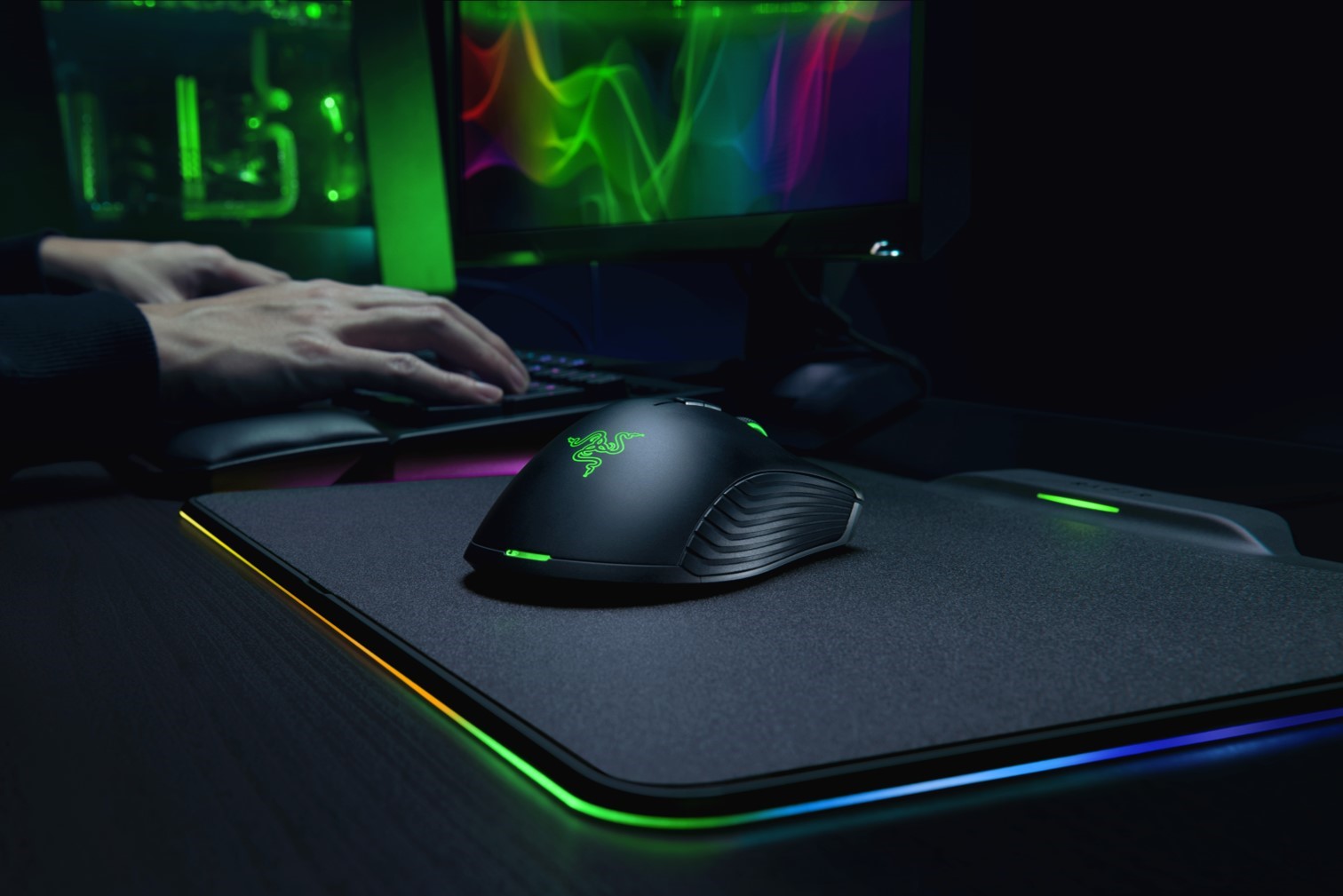
At CES this week, Razer showed off its new flagship wireless gaming mouse: the Mamba HyperFlux. Razer's goal for this mouse was to create one of the lightest high-performance wireless gaming mice available. In order to do so, it cuts something that seems like an important component: the battery.
How does it have power, then? The Mamba HyperFlux works with a new HyperFlux-branded version of Razer's Firefly mousepad. The Firefly and Mamba connect via a magnetic field that transfers power directly to the mouse, aka wireless charging. Without a heavy battery to charge, the Mamba HyperFlux weighs in at only 96 grams, lighter than the 107 grams of our favorite wireless mouse, Logitech's G900 Chaos Spectrum. That weight puts it in line with some of the lightest wired mice favored by pros, in the ~90 gram range.
In addition to this wireless power solution, the Mamba HyperFlux uses the same adaptive frequency technology found in Razer's Lancehead. It also features a 16,000 DPI 5G optical sensor, nine programmable buttons, 1000 Hz polling rate, and Razer Chroma lighting.
The downside to the new power solution is that the Mamba HyperFlux loses power if you move it away from the accompanying mouse mat for more than a few seconds. It's really meant for a stationary high-end desktop situation—not for carrying with you on the go.
The Mamba and Firefly HyperFlux will be sold as a combo for $250, available in Q1 this year.
The biggest gaming news, reviews and hardware deals
Keep up to date with the most important stories and the best deals, as picked by the PC Gamer team.
As the former head of PC Gamer's hardware coverage, Bo was in charge of helping readers better understand and use PC hardware. He also headed up the buying guides, picking the best peripherals and components to spend your hard-earned money on. He can usually be found playing Overwatch, Apex Legends, or more likely, with his cats. He is now IGN's resident tech editor and PC hardware expert.


